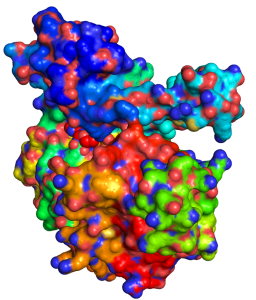A wide range of intra- and intercellular mechanisms are dependent on proteins. Nevertheless, to carry out their functions, they must form specific interactions with other molecules, such as proteins, nucleic acids, metal ions, and organic and inorganic molecules. As the first step in drug discovery, identifying ligand-protein interactions will significantly reduce the number of potential candidates. Hence, ligand binding plays an essential role in structure-based drug design, drug discovery, and side effect prediction.

Due to extensive costs and long-time demands of in vitro experiments, high-efficiency computational prediction methods have the potential to serve as promising strategies for the prediction of drug-target interactions (DTIs). On the other hand, the growing availability of different sources of known protein-ligand binding information and the extraction of significant features associated with the protein and ligand in various databases has opened up possibilities for machine learning (ML) and deep learning (DL) applications.
Identifying and validating targets is one of the most fundamental questions in drug discovery. Especially in the case of cancer, a variety of hyperactive networks, transmembrane receptors, protein kinases, and transcription factors are involved in cancer cell proliferation, invasion, metastasis, and angiogenesis. The vast cellular networks could produce several therapeutic targets that could be exploited to develop novel therapeutics.
As a drug discovery company, Pharmanoma employs machine learning and deep learning methods to predict potential ligands and affinity to help find new and better treatments for diseases faster.
Pharmanoma can generate ligands by using deep learning algorithms to analyse molecular descriptors. Pharmanoma strives to develop applications based on ligand and structural descriptors.